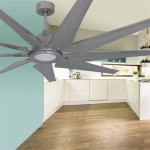Ceiling Downlights: Essential Aspects to Consider
Ceiling downlights, often referred to as recessed lighting, are fixtures installed into the ceiling to provide focused illumination. These versatile lighting solutions are gaining prominence in both residential and commercial spaces due to their ability to enhance aesthetics, save energy, and create ambiance.
To make an informed decision when selecting ceiling downlights, consider the following essential aspects:
Types of Ceiling Downlights
Downlights are available in various types, including:
- Fixed downlights: Emit light in a fixed direction, providing targeted illumination.
- Tiltable downlights: Allow for adjustment of the light beam angle, offering greater flexibility.
- Gimbal downlights: Highly adjustable, enabling precise positioning of the light beam.
- Trimless downlights: Create a seamless integration with the ceiling, providing a minimalist look.
Bulb Technology
Choose downlights compatible with the bulb technology that best suits your needs:
- Incandescent bulbs: Traditional option with low energy efficiency.
- Halogen bulbs: More energy-efficient than incandescent bulbs, offering brighter light.
- CFL (compact fluorescent) bulbs: Energy-efficient and long-lasting.
- LED (light-emitting diode) bulbs: Highly energy-efficient, long-lasting, and available in various color temperatures.
Color Temperature
The color temperature of a downlight refers to the warmth or coolness of the light emitted. Common color temperatures include:
- Warm white (2700K-3000K): Cozy and inviting, ideal for living rooms and bedrooms.
- Neutral white (3500K-4000K): Resembles natural daylight, suitable for kitchens and offices.
- Cool white (4500K-6500K): Energizing and stimulating, often used in workspaces and retail environments.
Beam Angle
The beam angle determines the spread of light emitted by the downlight. Choose a beam angle that complements your lighting requirements:
- Narrow beam angle (10°-30°): Creates a focused beam of light, ideal for task lighting.
- Medium beam angle (30°-60°): Provides a more diffused spread of light, suitable for general illumination.
- Wide beam angle (60°+): Emits light over a wider area, effectively washing walls or highlighting architectural features.
Depth and Cut-Out Size
Ensure the downlights fit into your ceiling cavity by considering their depth and cut-out size:
- Depth: Refers to the distance between the front of the downlight and the ceiling line.
- Cut-out size: The diameter of the hole that needs to be cut into the ceiling for the downlight to fit.

Luceco Matt White Fixed Led Fire Rated Warm Downlight 5w Ip65 Pack Of 6 Diy At B Q

Luceco Matt Stainless Steel Effect Fixed Led Fire Rated Warm White Downlight 5w Ip65 Pack Of 6 Diy At B Q

Luceco Chrome Effect Fixed Led Fire Rated Cool White Downlight 5w Ip65 Diy At B Q

Luceco Gloss White Fixed Led Fire Rated Warm Downlight 5w Ip65 Pack Of 4 Diy At B Q

Litecraft Toul White Paintable Ceiling Downlight Diy At B Q

Ceraon Chrome Effect 6 Light Spotlight Diy At B Q

Luceco Matt Black Fixed Led Fire Rated Cool White Downlight Ip65 Pack Of 6 Diy At B Q

Ceraon Chrome Effect 3 Light Spotlight Diy At B Q

Catalyst Pewter Black Gunmetal Effect 3 Light Spotlight Diy At B Q

Valuelights 10 Pack Polished Chrome Gu10 Ceiling Downlight Fittings Diy At B Q
Related Posts








